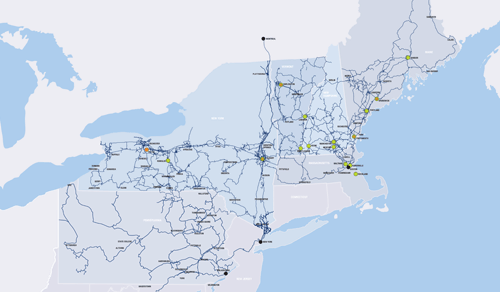Not long ago, copper wires were traditionally used for connectivity, but fiber optics have emerged as a superior method. Fiber optic wires are made from glass instead of metal. The fiber is the width of a human hair. These glass wires are then used to transmit information through pulses of light generated by lasers.
 The most obvious business benefit of fiber optics is speed. With fiber optics, information can travel close to the speed of light, providing virtually limitless bandwidth. But there are other, lesser known benefits of choosing fiber optics over copper cables or Digital Subscriber Lines (DSL). Let’s shed some light on the other perks.
The most obvious business benefit of fiber optics is speed. With fiber optics, information can travel close to the speed of light, providing virtually limitless bandwidth. But there are other, lesser known benefits of choosing fiber optics over copper cables or Digital Subscriber Lines (DSL). Let’s shed some light on the other perks.
Here are five benefits fiber optics can provide your business:
1) Reliability
Fiber optics are less susceptible to downtime than copper cables. The glass wires used for fiber optics can withstand more pressure than copper wires. Fiber optics also resist the effects of adverse weather or temperature conditions. They can even be submerged in water without experiencing an outage. Fiber optics do not conduct electricity, so they resist electromagnetic interference (EMI) and radio frequency interference (RFI) for a clear connection.
2) Access to the Cloud
The success of any cloud solution depends on a fast and reliable internet connection. Fiber optics provide the speed and resilience needed for cloud computing. The high-speed connections offered by fiber optics are ideal for transmitting huge volumes of digital information.
3) Low Latency
Latency is the amount of time it takes a packet to reach its destination. Unlike copper and DSL, fiber optics guarantee connection speeds. Fiber optic-based networks offer faster upload and download speeds. Depending on how a network is designed, packets of information can be sent quickly and reliably without suffering bottlenecks. Low latency is key in telecommunications to maintain the fluidity of a voice conversation and to quickly process transactions in a data application. For the Internet, low latency means your business can successfully process real-time information.
4) High Bandwidth
According to the Fiber Optic Association (FOA), copper cables provide 3,000 hertz of bandwidth. This is fine for voice, but not ideal for digital connectivity. Fiber optics offer 1,000× the bandwidth over 100× the distance of copper cables. While copper only performs at 1.5 megabytes per second over 2.5 km, fiber optics perform at over 2.5 gigabytes per second over 200 km.
5) Signal Strength
Glass is thinner and lighter than copper, so more wires can fit inside a sheath of cable. In fact, hundreds of thousands of these glass fibers can fit into a single cable. A higher concentration of wires reduces signal degradation over long distances. The cladding that covers the wires reflects light, preventing the signal from escaping and allowing it to travel around bends in the cable. Lack of signal degradation also allows for the energy-efficient use of low-power transmission.
Fiber Optic Advantages Add Up
The performance advantages of fiber optics result in cost savings for telecom and internet providers and users. While fiber optics may have a higher upfront cost, the long-term savings will more than make up for it. The FOA points out that fiber optics are 1/100th the cost of copper per voice channel, resulting in a lower total cost of ownership.
No matter what your business size or industry, FirstLight can provide the right fiber optic-based solutions for your company. Additionally, depending on your organization’s needs, we can provide anywhere from 5 megabytes per second to 100 gigabytes per second of bandwidth, ensuring you have the connectivity you need to run your business.
Find out more about what fiber optics can do for your business. Reach out to FirstLight today.




















